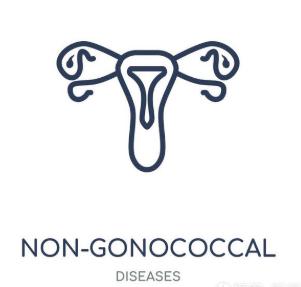Know Some Cure Criteria for Non-gonococcal Urethritis
Date:2021-07-23 click:0
Non-gonococcal urethritis (NGU) is a socially infectious disease. It refers to a sexually transmitted disease caused by Chlamydia trachomatis and Mycoplasma. If not treated in time, the disease will often be transmitted to their sexual partners. It will also cause urethritis, mucopurulent cervicitis, acute pelvic inflammatory disease, infertility, and etc. Women may also have clinical manifestations such as cervicitis and inflammation of the genital tract. Therefore, the impact of NGU on the human body is great.
Among the pathogens of NGU, 40%~50% are caused by Chlamydia trachomatis. About 20%~30% are caused by Mycoplasma. And 10%~20% are caused by Trichomonas vaginalis, candida albicans and herpes simplex virus. NGU is more common in youthful sexual vigor, and 60% of patients are under 25 years of age.

The main route of transmission is direct contact with the patient or spouse after unclean intercourse with the patient. Female patients are 4 times that of male patients. And the more sexual partners, the greater the chance of infection. In addition, it can be infected through the mother's birth canal during childbirth.
How can NGU be cured? Let us explore together.
Treatments:
Mycoplasma, chlamydia, and pathogenic bacteria can survive in the human body for several months. The symptoms of NGU will not disappear automatically. There are potential complications, and can spread epidemic at the same time. So, effective treatment is very important. What can you do to treat NGU?
1. Medication: Try herbal medicine Diuretic and Anti-inflammatory Pill. It can kill all kinds of bacteria, mycoplasma, and chlamydiaetc without side effects. More importantly, it can improve the body's ability to resist bacteria or viruses and reduce the possibility of recurrence.
2. Sexual partner treatment:
Sexual partners must undergo STD-related examinations.
Stop sexual life before you are cured.
Follow the treatments according to the recommended plan.
Sexual partners must undergo STD-related examinations.
Stop sexual life before you are cured.
Follow the treatments according to the recommended plan.
3. Follow-up: After treatment starts for 6 weeks, the test and culture can be repeated. If it is still "positive", the treatment plan needs to be changed immediately.
4. If the treatment fails, the reasons should be ascertained:
Whether it is resistant to the drug;
Whether the sexual partner is ill, inspected or treated;
There is some possibility of re-infection after treatment;
Confirm whether it is concurrently infected with other pathogens. After finding out the cause, revise the treatment plan.
Clinical criteria of cure:
Re-examination within one week after treatment:
The symptoms disappeared for more than one week.
No urethral discharge.
The urine sediment smear has no white blood cells or the high power field of view is less than 15.
Smear examination or culture was negative after one week.
Treatment effect level:
1. Recovery: The conscious symptoms disappear. Male patients have no urethral secretions and urine without white blood cells; female patients have no clinical manifestations of endocervical inflammation.
2. Significantly effective: the conscious symptoms are significantly reduced. Male patients have no urethral secretions, and there are still 5-10 white blood cells in the urine; the clinical manifestations of female patients with endocervical inflammation are significantly reduced.
3. Effective: Subjective symptoms have improved. Male patients still have a little secretion in the urethra, and urine white blood cells >10; female patients have a slight reduction in clinical manifestations of endocervical inflammation.
4. Invalid: No change in clinical manifestations and laboratory tests. The total effective rate is calculated by the percentages of healing level and cure effect.
You may also be interested in:



